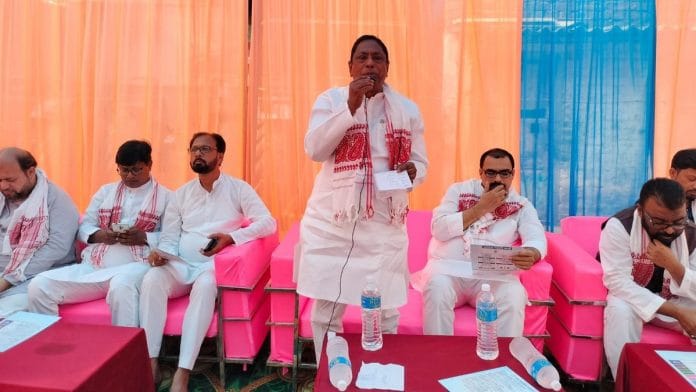Ranchi: A fresh string of Enforcement Directorate raids in Jharkhand appear to have unearthed a deep-seated corruption network in the state’s governance machinery. Central to this is a “top to bottom” nexus of government officials, engineers, and politicians allegedly siphoning and laundering funds earmarked for rural development programmes and infrastructure projects, like roads.
So far, the ED has recovered Rs 35.23 crore from premises linked to civil servant Sanjeev Lal, personal secretary of Rural Development Minister Alamgir Alam, and other associates. Last Tuesday, Lal and his domestic employee Jahangir were arrested under provisions of the Prevention of Money Laundering Act (PMLA).
In addition, minister Alam, a four-time Congress MLA and one of the few prominent Muslim faces of the Congress and INDIA bloc in the state, is in the hotseat, undergoing questioning by the ED for several hours Tuesday.
These cash seizures and arrests were part of an ongoing ED money laundering investigation connected to the Rural Development and Rural Works departments, both of which come under Alam.
Over the last few years, these departments have received a rising share of budgetary allocations in Jharkhand. Where other states reportedly allocate an average of 5 percent of their budget to rural development, Jharkhand is nearly 10 percentage points ahead.
In the current financial year (2024-25), over 14 percent of the state budget was provisioned collectively to the Rural Development, Rural Works, and Panchayati Raj departments, up from about 12 percent the previous year.
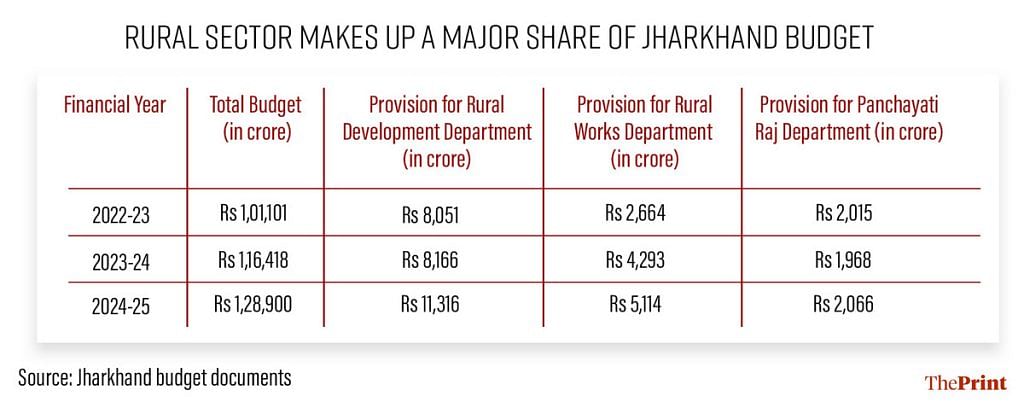
This year, Rs 11,316.07 crore was allocated to the Rural Development Department, which manages various programmes for water, sanitation, employment, and so on. The Rural Works Department, primarily responsible for road development, was allocated Rs 5,114.03 crore.
However, Jharkhand, classified as India’s second-poorest state by the NITI Aayog Multidimensional Poverty Index, still has much of its rural population living without access to basics like healthcare and education.
Rampant and chronic corruption under the watch of successive governments has a lot to do with this, according to activists.
“If we look at the government records and figures in Jharkhand, the rural development schemes appear to be great ideals, but the reality at the ground level is the opposite,” said James Herenj, state convener of NREGA Watch, a network of organisations and groups that tracks the implementation of the Mahatma Gandhi National Rural Employment Guarantee Act (MGNREGA).

The latest PMLA investigation is not an isolated case. In 2022, the ED raided IAS officer Pooja Singhal over a five-year-old case involving the misappropriation of Rs 18.6 crore from MGNREGA funds during her tenure as a deputy commissioner of Khunti district back in 2009-10.
The current government, a coalition led by the Jharkhand Mukti Morcha (JMM) with Congress and RJD as partners, ousted the BJP in 2019. However, it has been under fire for months over corruption allegations, with former Chief Minister Hemant Soren resigning following his arrest in January in a money laundering case linked to an alleged land scam.
Now, with the recent ED raids occurring during the Lok Sabha elections, the INDIA bloc finds itself in a tricky position. The opposition BJP in the state is now training its guns on Alamgir Alam, who has been at the forefront of the bloc, at a time when the alliance is seeking to ride a sympathy wave following Soren’s arrest.
With the elections for the 14 seats in Jharkhand taking place across May 13, 20, 25, and June 1, the latest allegations of corruption and kickbacks in the rural departments add another challenge for the JMM-Congress in what is already a highly charged electoral battle.
Also Read: Why ‘washing machine’ is drowning discourse in ‘Koda land’ Singhbhum in Jharkhand
What are the allegations?
At around 11 am Tuesday, Rural Development Minister Alamgir Alam arrived in Ranchi to answer the Enforcement Directorate’s questions. “I abide by laws,” he declared to reporters before entering the agency’s office.
Going by ED sources and documents, there is a lot to be answered for when it comes to irregularities in the rural departments under Alam.
The ED corruption “nexus” investigation started gathering steam in February 2023 when Virendra Ram, then chief engineer of the state Rural Works and Rural Development departments, was arrested in a money laundering case related to financial irregularities in schemes and tenders.
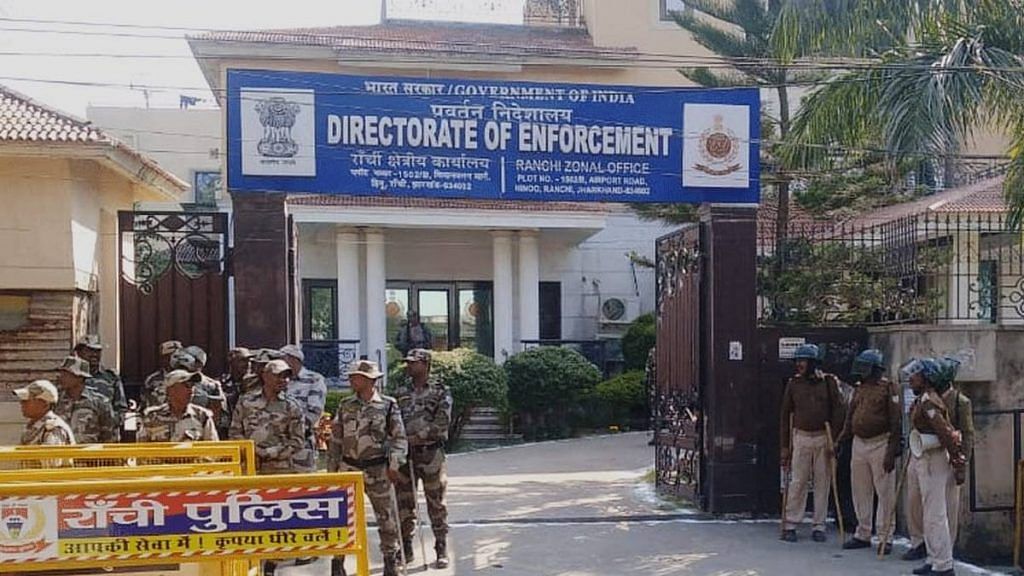
According to ED sources, Ram would collect “commissions” on the allocations of tender and execution of work and then distribute a fixed 1.5 percent share of the proceeds “among his seniors and politicians”.
Ram also reportedly admitted to giving crores of rupees to Alam’s secretary, Sanjeev Lal, in 2022 for further distribution higher up the pecking order.
In its remand petition following the raids, in which over Rs 35 crore was recovered, the ED outlined Lal’s role in this alleged modus operandi.
“(I)t is ascertained that Sanjeev Lal takes care of the collection of commission on behalf of some influential persons, and plays a pivotal role in managing the tenders and commission from engineers,” the document says.
The ED adds that the sums were then distributed in a “mechanised manner” to higher-ups in the government.
“During the investigation, names of senior bureaucrats and politicians have emerged,” the remand petition submitted in the court by the ED continues. “It is submitted that several officials from the top to bottom of (the) Rural Development Department are involved in this nexus… huge payments were usually received in cash, which were later laundered.”
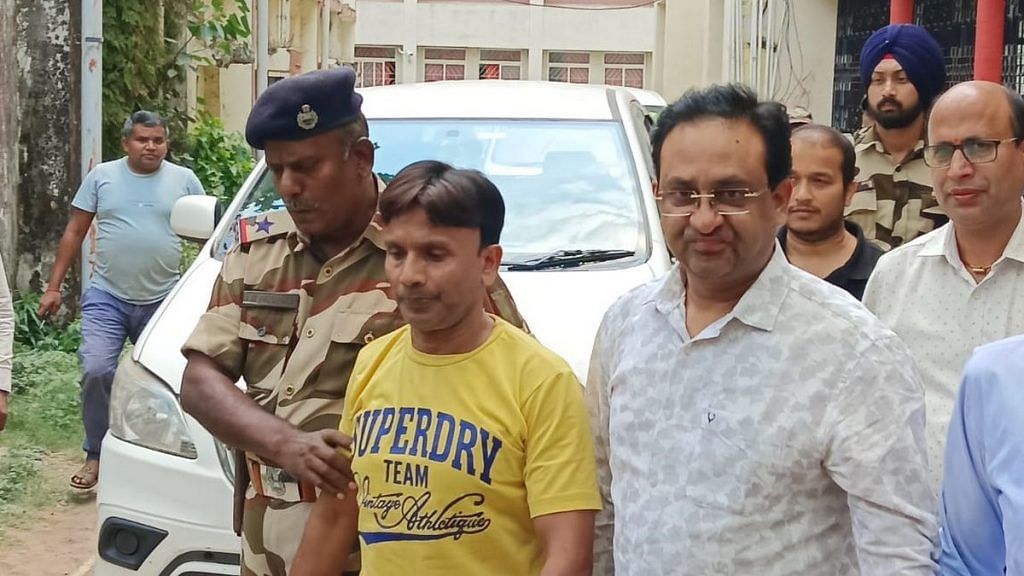
As might be expected, these developments have given plenty of ammunition to the state’s opposition, who claim that this extent of corruption would not be possible without Alam’s complicity.
Alam, 70, is a four-term MLA from the Pakur assembly seat and is known as a key election strategist for the Congress in Jharkhand. Despite accusations related to an alleged scam in assembly appointments during his tenure as the speaker in the Jharkhand Legislative Assembly in 2006-09, he continues to be one of the party’s most prominent leaders in the state.
“The facts that are coming out in the ED investigation clearly indicate that the departmental minister Alamgir Alam was also involved in this,” alleged BJP’s Amar Kumar Bauri, Leader of Opposition in the Jharkhand assembly, speaking to ThePrint. “How is it possible that an organised nexus of PS, bureaucrats, engineers, and contractors is active in a department to collect commission/percentage and manage tenders and the departmental minister is not aware of it?”
Even Prime Minister Narendra Modi commented on the situation at a rally in Andhra Pradesh, referring to the “mountains of cash” found at the residence of Lal’s domestic helper. Without naming Alam, the PM further alleged that persons “close to the Congress’ first family” had turned a worker’s house into a “godown of corruption”.
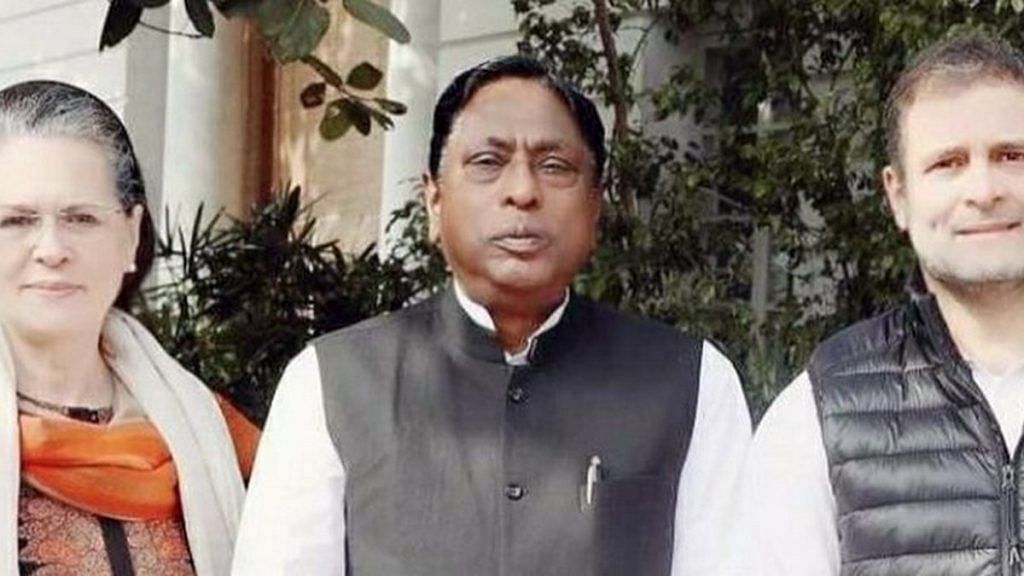
Alam, meanwhile, has maintained in media appearances that the allegations levelled against him are aimed at maligning his reputation and that his image is “not corrupt”. He has also pointed out that Lal had earlier served with other ministers of the state government too.
What does the Rural Development Department do?
Jharkhand, where about 76 percent of the population lives in villages per the 2011 census, has struggled with uplifting its rural population for a long time.
Despite the apparent high priority given to the Rural Development Department, evidenced by rising budgetary allocations—most recently fro, Rs 8,166 crore in 2023-24 to Rs 11,316 crore in 2024-25—and an abundance of schemes under its purview, progress has been slow.
According to budget documents, there are at least 20 central and state-sponsored schemes running in the state. These are designed to address pressing issues such as unemployment and underemployment through measures to generate productive assets, enable environmental protection, empower rural women, reduce rural-urban migration, and promote social equity.
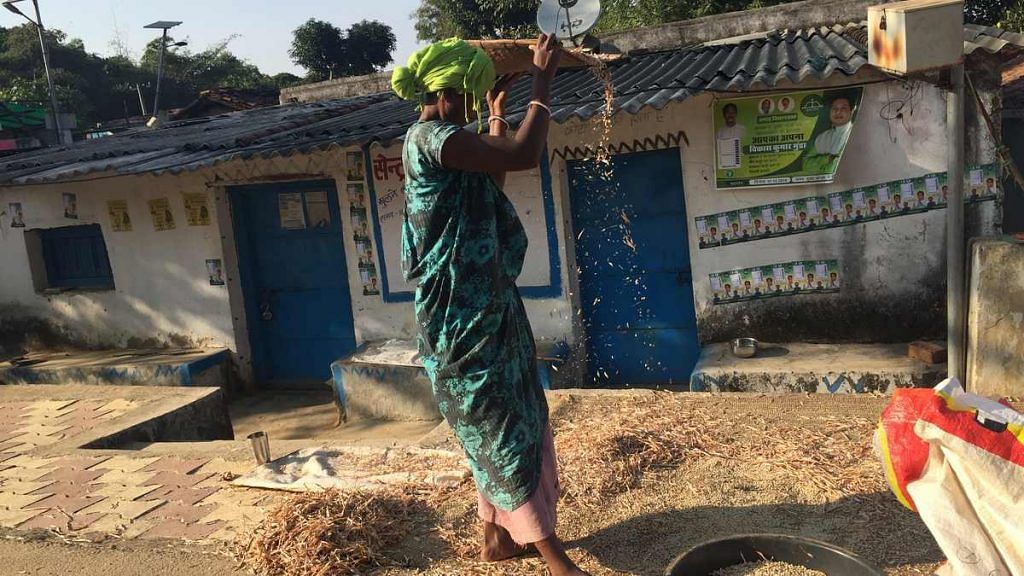
These schemes include MGNREGA, National Rural Livelihood Mission (NRLM), Pradhan Mantri Awas Yojana-Gramin, Deen Dayal Upadhyaya-Grameen Kaushalya Yojana (DDU-GKY), Farm Livelihood Mahila Kisan Sashaktikaran Pariyojana, Jharkhand State Livelihood Promotion Society (JSLPS), National Rural Economic Transformation Project, and the Abua scheme, launched last year to provide houses to those deprived of benefits under the Pradhan Mantri Gramin Awas Yojana (PMGAY).
Another major scheme is the Jharkhand Opportunities for Harnessing Rural Growth (JOHAR), supported by the central and state governments as well as the World Bank, to help rural households in Jharkhand increase their income.
On the face of it, strong processes are in place. For the successful implementation and monitoring of these schemes and projects, different nodal agencies work from the block, district administration, and state headquarters. Separate wings have also been formed for many important projects.
Yet, the results have been uneven. While the multidimensional rural poverty rate has gone down from 50.92 percent in 2015-16 to 34.93 in 2019-21, according to NITI Aayog, many families are still financially and socially excluded with a lack of access to government schemes and benefits.
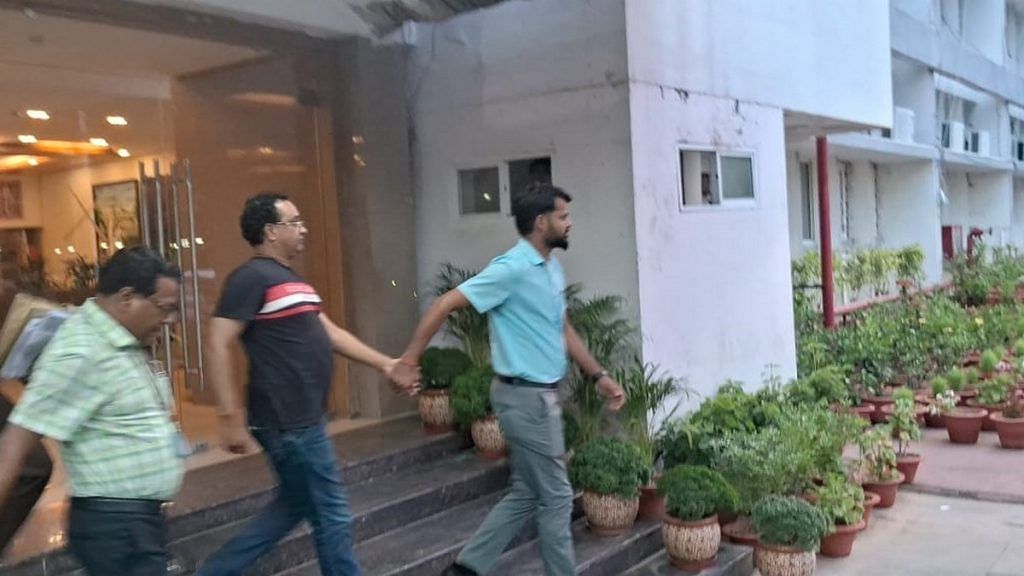
The 2024 budget report of the state government also states that a large proportion of the rural poor are still shelterless or have houses not fit for living. Many habitations and villages do not have proper connectivity either.
According to NREGA Watch state convenor Herenj, schemes do not always translate effectively on the ground, and the main reason for this is misuse of funds and a lack of oversight.
“If Jharkhand’s tribal and lower-caste communities haven’t benefited fully from programmes like MGNREGA, widespread corruption is likely the culprit,” he said.
Irregularities in tendering
Another department tasked with improving life in Jharkhand’s villages is the Rural Works Department. It’s responsible for constructing, strengthening, and repairing rural roads and bridges. Its duties encompass everything from issuing tenders to implementing projects, with engineers and contractors playing a major role in this process.
This department’s budget has seen a spike as well. In the financial year 2022-23, the allocation was Rs 2664.33 crore, which jumped to Rs 5114.03 crore for 2024-25.
Key schemes operated under it include the Prime Minister Gram Sadak Yojana, Chief Minister Gram Sadak Yojana, Chief Minister Gram Setu, Chief Minister Gram Sadak Sudharikaran Yojana, and the Road Connectivity Project for Left Wing Extremist Affected Areas (RCPLWEA).

However, this department is reputed to be a hotbed of corruption, particularly when it comes to tender management. On May 6 and 7, the ED raided the premises of several department engineers in Ranchi in connection with current investigations.
It is considered an open secret that eligible contractors often miss out on work opportunities, while those with connections secure contracts unfairly. There are also allegations that engineers have received kickbacks for unfairly awarding contracts.
The allure of wealth in Rural Development and Rural Works departments is reportedly so strong that engineers allegedly bribe their way into desired postings.
“Large amounts of money have been extorted in the Rural Development Department and Rural Works Department for transfer-posting to desired places and posts,” BJP leader Bauri told ThePrint. “The ED’s revelations show that the officer-engineer-contractor nexus has been dominant in managing tenders in these departments.”
Also Read: Warrior image, tribal connect—Jharkhand ex-CM Hemant Soren’s wife Kalpana is rising as a politician
(Edited by Asavari Singh)



